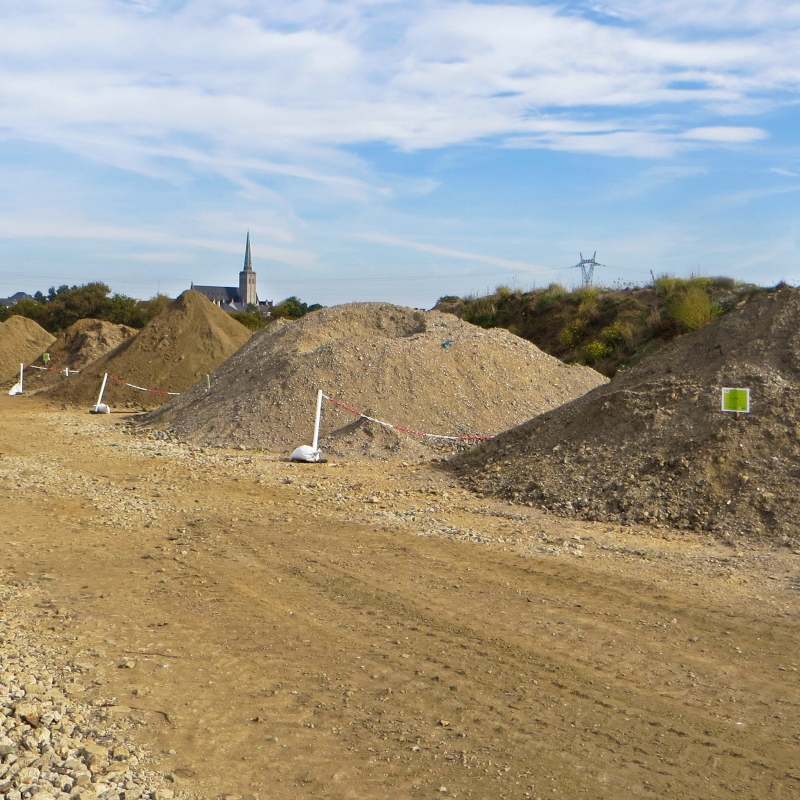Piles of excavated soil stored on the SUEZ platform in Donges. © BRGM – S. COUSSY
Digital data, services and infrastructure
The partner interview
Vincent Coissard Deputy Director for Waste and the Circular Economy at the Directorate General for Risk Prevention, MTECT
What are the challenges facing your sub-directorate right now?
Vincent Coissard — The Sub-Directorate for Waste and the Circular Economy at the MTECT (Ministry for the Ecological Transition and Regional Cohesion) is responsible for defining and regulating waste management with a view to making it part of the circular economy. In April 2018, the circular economy roadmap (FREC) set out 50 measures divided into four main goals: to produce, consume and manage waste more efficiently, and also to engage all stakeholders. The objectives are to cut the amount of non-hazardous non-inert waste going to landfill by half in 2025 compared to 2010, and to reduce resource consumption in relation to GDP by 30% in 2030, as well as cutting our greenhouse gas emissions. To do this, we need to improve our knowledge of what happens to our waste, and thus to increase traceability and create centralised electronic registers. Until now, we only had visibility for certain types of waste! And we didn’t know much about the traceability of excavated soil! Hence the recent requirement for centralised reporting, which led to the creation of the National Register of Waste, Excavated Soil and Sediment (RNDTS). This register will acquire and save all declarations concerning the excavation of soil and sediment by local authorities, contractors, individuals producing or processing excavated soil and sediment, and so on.
And so you brought in BRGM?
V.C. — It was the natural step to take! We asked BRGM to build the tool and manage it in the form of an app for business users (see page 64). As I just said, this collaboration was a natural step, given BRGM’s IT and digital expertise, skills relating to excavated soil, polluted sites and soil, experience with the TERRASS app, etc. Working with BRGM was a highly efficient process: once the order was placed, the tool was developed jointly in collaborative mode as part of an agile and proactive approach based on continuous dialogue. The process was steered by the Waste Management Planning Department (BPGD) within my sub-directorate.
What was the result?
V.C. — It’s taken just one year! We began work on the initial version in 2022, and it’s already on line. We still need to work on future developments, APIs and ergonomics. But it’s operational and I feel confident for 2023. The tool has huge potential for the detailed tracking of waste, excavated soil and sediment. This is the year of the ramp-up, marking a turning point in terms of traceability. At the same time, with BRGM taking over another application dedicated to waste traceability, TrackDéchets, we’re looking at a number of new projects that will improve our knowledge still further.






